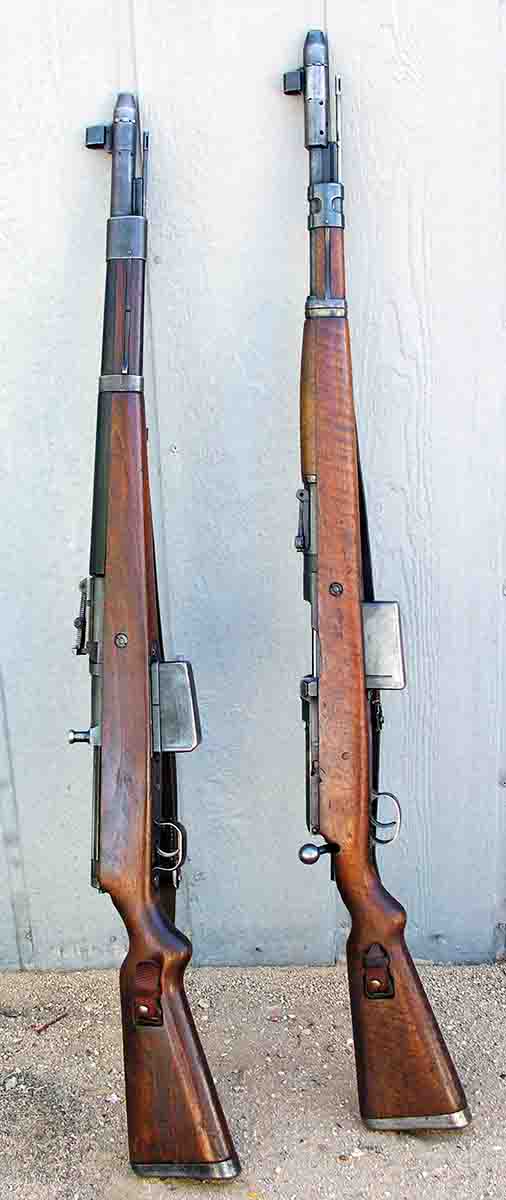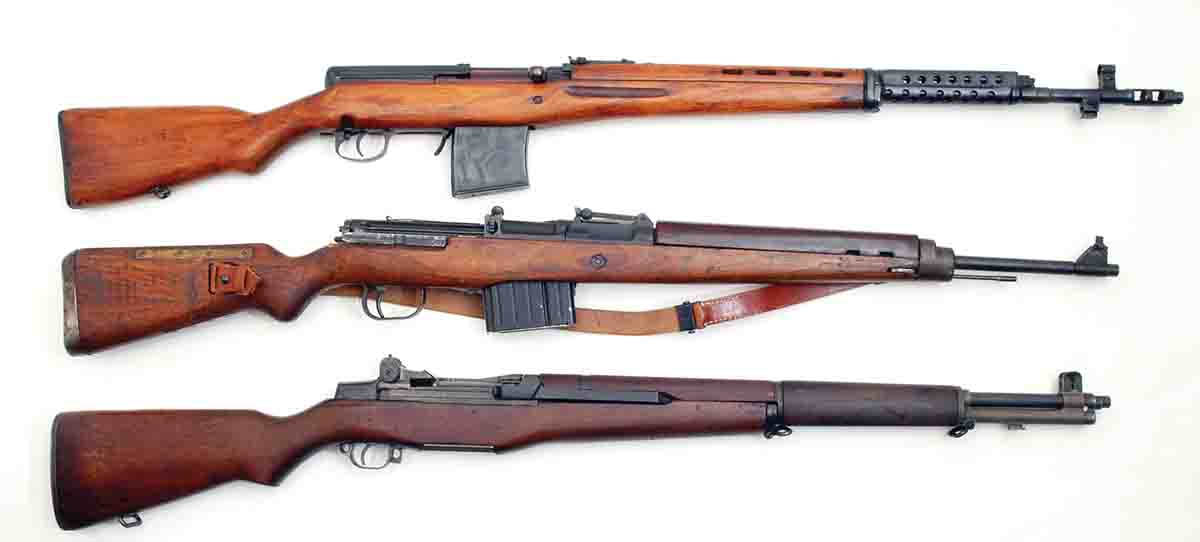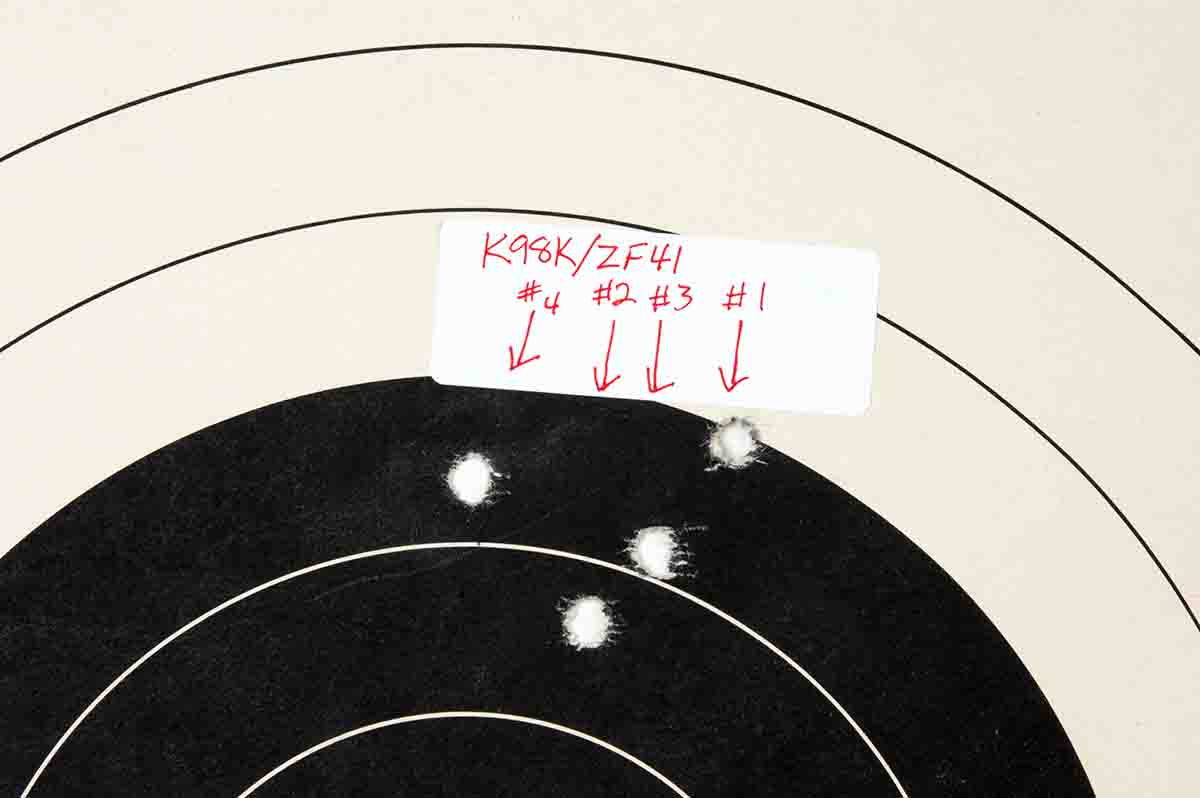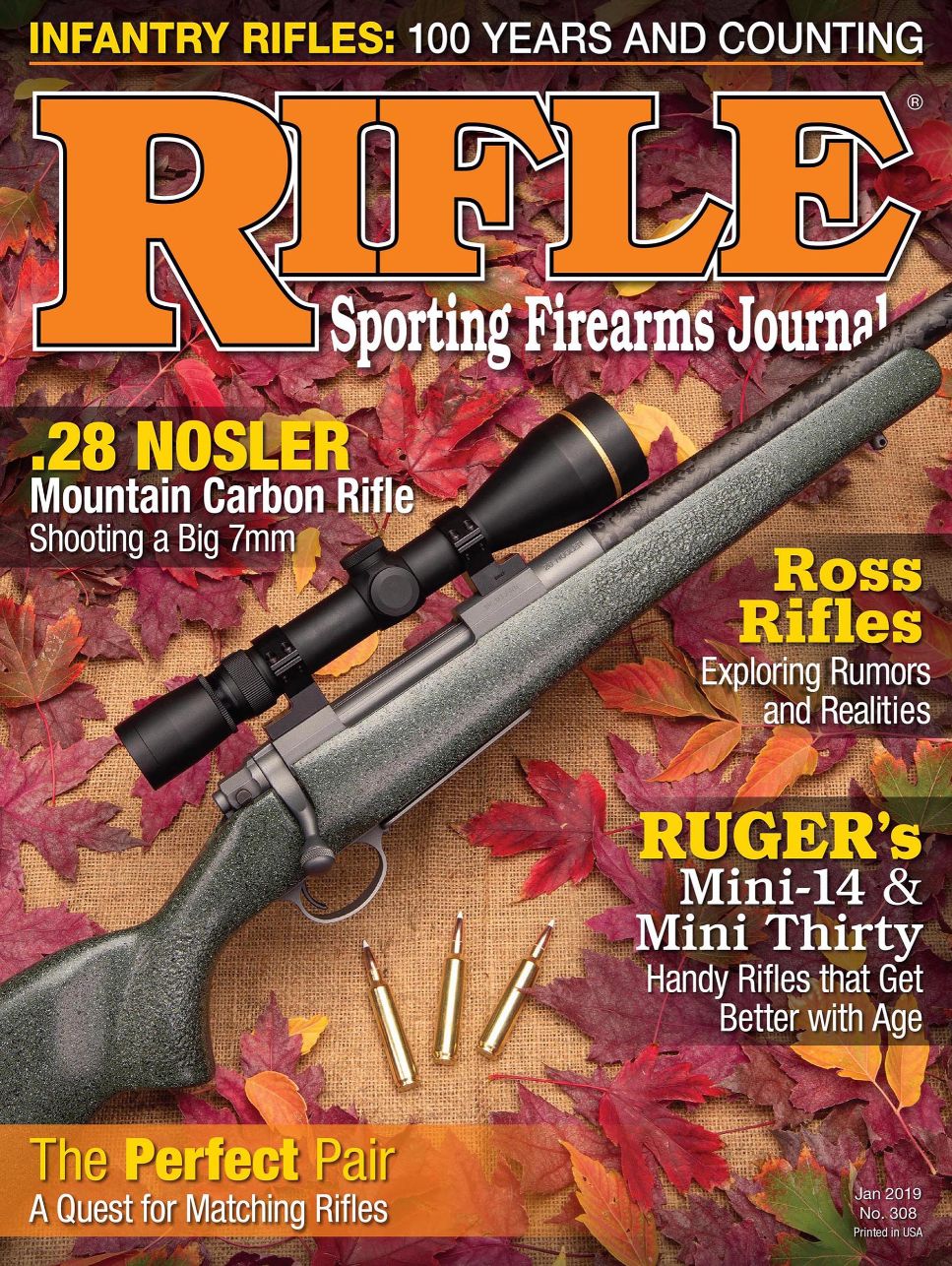Down Range
The Other World War II Semiautos
column By: Mike Venturino | January, 20

According to historians, Hitler decreed that bolt-action rifles were good enough for the Wehrmacht because German war-making was now going to be blitzkreig (lightning war) centered on fast moving armored forces. Adopted officially in 1935, Germany’s standard infantry rifle was the basic Model 1898 Mauser action remodeled as the K98k. By 1941 Germany developed several versions of semiautos and actually combat-tested some by limited issue on the Eastern Front.
Most notable were Walther’s and Mauser’s Gewehr 41/W and Gewehr 41/M. Both types were chambered for the standard 7.92x57mm and only made in the thousands. G41s can be generically called “gas trap” versions because German ordnance officers balked at drilling holes in rifle barrels to bleed off gas for semiauto operation. (U.S. ordnance officials were of the same mind earlier. The first 40,000 or so M1s were gas-trap models. They were recalled circa 1940 and converted to the gas port in barrel system.)
Finally, by 1943 German ordnance officials acquiesced to ports in barrels and officially adopted the Gewehr 43 (G43). Again, chambering was 7.92x57mm. This may sound like blasphemy to many Americans, but Germany’s new rifle had some superior features compared to the M1 Garand. G43s fed cartridges from 10-round detachable magazines extending beneath stocks in front of trigger guards. These magazines could be pre-loaded, but Wehrmacht doctrine called for loading G43 magazines mounted in rifles with the same five-round stripper clips used for K98ks.

Also standard on G43s were rails machined to the receivers’ right sides for quick detachable scope mounting of a special ZF4 4x scope. Many G43s were issued to snipers, but in truth their accuracy wasn’t suited for long-range precision shooting. Those issued to standard infantry troops had an open rear sight coupled with post front. Weight was comparable to M1 Garands, however no provision for mounting bayonets was made.
Germany put its rifles’ gas pistons atop the 22-inch barrels instead of beneath. That meant cursory cleaning could be done by simply removing the handguard, whereas the M1’s barreled actions had to be removed from stocks for complete cleaning. For some reason, before war’s end Germany changed its semiauto rifle’s designation to K43. Less than a half-million G/K43s were made, so between Hitler and German ordnance officers this well-designed rifle was too little and too late.
The Soviet Union was just barely behind the U.S. in adopting a semiauto infantry rifle. The first one was the SVT38, which saw limited issue before being remodeled to the SVT40 (meaning years of adoption as 1938 and 1940). The latter version never became the Red Army’s standard infantry rifle. That remained the bolt-action MN91/30, although both used the same 7.62x54mm rimmed cartridge. A scope could be mounted to SVT40s with the addition of a simple groove cut across the receiver’s rear. Scoped versions were issued to snipers, but in many infantry units iron-sighted SVT40s were given to NCOs.

It is interesting to note that SVT40s were popular with German troops on the Eastern Front as evidenced by the many photos showing SS and regular Wehrmacht troops carrying captured rifles. About 1.5 to 2 million were produced. Some were made select-fire, i.e. full-auto or semiauto at the touch of a lever. Because of the 7.62x54mmR’s recoil they were all but uncontrollable in full-auto.
In my collection are two SVT40s; one has issue iron sights but the second one purchased came with the special slot cutout for scope mounting. I purchased replica mounts with rings and a copy of the special PU 3.5x. Those items were found on the GunBroker website, were made in the Ukraine and have given no problems. While my iron-sighted SVT40 shoots groups about as one might expect from a nearly 80-year-old battle rifle – say 3 to 4 MOA – the scoped SVT40’s five-shot, 100-yard groups are about half that size.
My collection includes a single German semiauto; a K43 made in 1945. It includes one of the ZF4 scopes in the well designed quick-detachable mounts. As noted, Germany envisioned the G/K43 for replacing K98ks and also as a sniper rifle. It actually did neither. For the latter purpose it just did not deliver enough precision for the purpose. On the plus side, I was amazed at how close to zero the scope returned after dismounting and remounting. I was also amazed at how far it threw the first ejected cartridge case – at least 20 feet to the right. Again perusing the Internet, I found a company called Apfeltor (apfeltor.com) that produces replacement G/K43 gas pistons with several gas restrictors to “calm down” my rifle’s ejection.
The era of semiauto function infantry rifles didn’t last long. By the 1960s select-fire was the norm for most large militaries, and with their passing so did the great importance armies placed on individual marksmanship.


